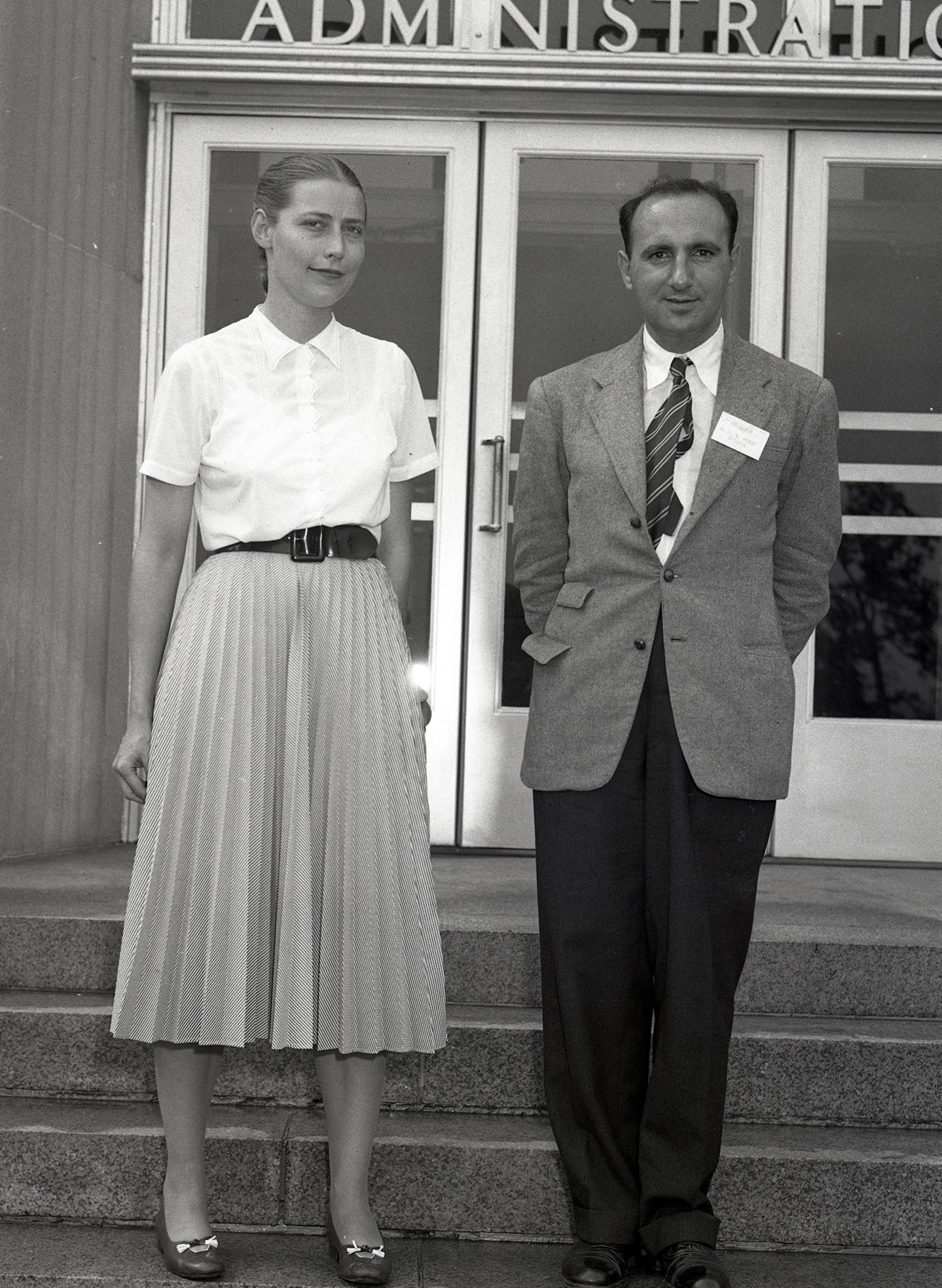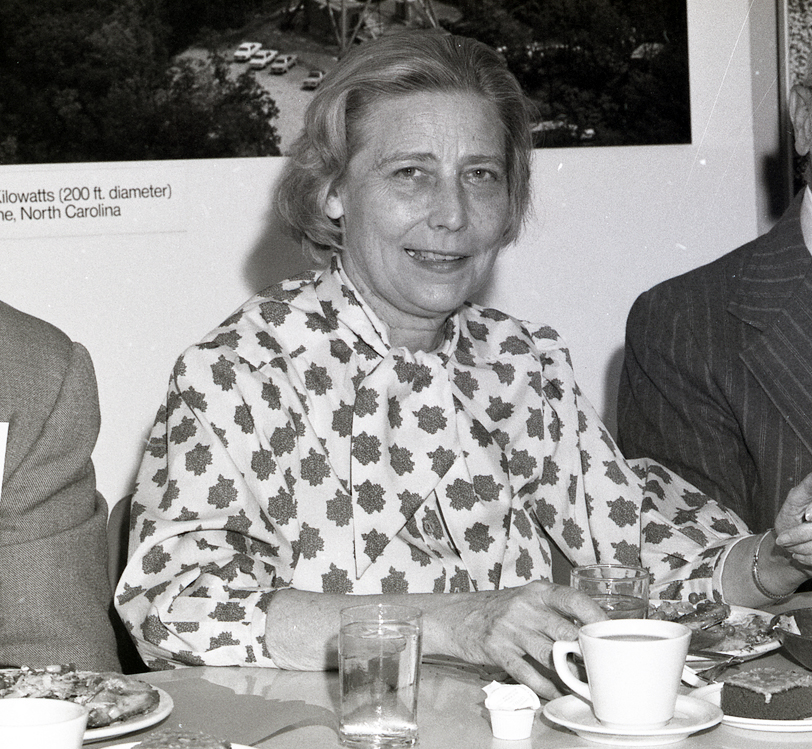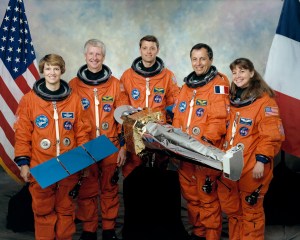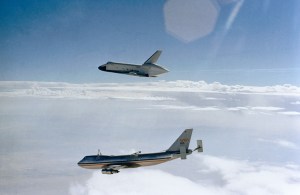Dr. Dorothy M. Simon, once referred to as “the most important woman in space science and possibly the most important lady scientist in the country,” first achieved international recognition in the early 1950s as a combustion researcher at the NACA’s Lewis Flight Propulsion Laboratory. She went on to become a leading expert on rocket propulsion systems, a pioneering female in corporate management, and a lifelong advocate for women in the sciences.
Simon was aware of the sciences from an early age but did not decide to go into chemistry as a profession until college. “The desire to put bits of knowledge into a whole was too strong to resist,” she recalled. She earned her doctorate in physical chemistry in 1945.
Simon’s career began at Dupont where she developed new synthetic fibers. While attending a professional society meeting, she met Dr. Sidney Simon, a physicist for the NACA Lewis laboratory who was on a special detail to the Oak Ridge National Laboratory (ORNL). The couple married in 1947 and relocated to Tennessee. As a chemist at ORNL, Dorothy was the first to isolate a new calcium isotope. After additional work at the Argonne laboratory, Sidney returned to the NACA in 1949.
Dorothy joined NACA Lewis as a research scientist in the Fuels and Combustion Division. She soon became passionate about her new field of combustion. Simon developed a method for measuring flame velocity for various types of fuels and determined the minimum diameter tube necessary to maintain the flame. Engine manufacturers used this data to improve their engine designs.
Simon’s work, disseminated through NACA reports and presentations at professional meetings, quickly garnered acclaim. In early 1953, Simon received a prestigious Rockefeller Public Service Award. NACA management nominated her for the fellowship, which included a $10,000 (equivalent to $97,000 today) stipend to further her education at the University of Cambridge in England.
While continuing her combustion research at Cambridge, Simon visited aeronautical facilities in other countries and attended professional meetings, where she found that the European combustion community was familiar with her NACA papers. After nearly a year abroad, Simon returned to her husband and the NACA, where she was promoted to assistant chief of the Combustion Branch.
In the 1950s, Simon began appearing in newspapers, popular magazines, and radio programs. She discussed not only her professional activities, but also the role of women in science and education. In 1959, Simon was featured in an extended Saturday Evening Post article and a half hour WGBH radio interview.
The Simons left the NACA in 1955, first for a brief stint in the Texas oil industry, then for positions at the aerospace firm AVCO Corporation in Massachusetts. Dorothy served as both technical advisor to the chairman and head of the combustion group. In the early 1960s, Simon made a key contribution to the development of heat shields for space vehicles.
As AVCO’s first female corporate officer, Simon held a number of positions, including vice president and director of research (1968–1985). She was recognized as an international expert in combustion and high-temperature composite materials and served on a number of notable national and international committees and corporate boards. She received several significant awards, two honorary degrees, and fellowships.
Dr. Simon later relocated to North Carolina, where she conducted an oral history interview with NASA historians. She passed away in 2016 at the age of 96.
Robert S. Arrighi
NASA Glenn Research Center






























